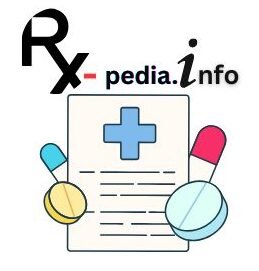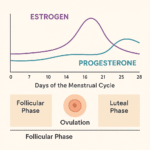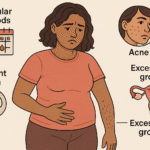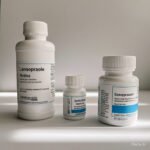Table of Contents

I. Introduction
- Sleep apnea is a serious sleep disorder characterized by repeated interruptions in breathing during sleep.
- These interruptions can last from a few seconds to minutes and often occur multiple times throughout the night.
- The impact of sleep apnea on daily life can be profound, leading to excessive daytime sleepiness, irritability, and difficulty concentrating.
- This condition not only disrupts sleep but can also increase the risk of serious health issues such as heart disease, high blood pressure, and diabetes.
- Recognising the symptoms of sleep apnea is crucial for early intervention. Common signs include loud snoring, gasping or choking during sleep, and persistent fatigue during the day.
- Many individuals may not be aware they have sleep apnea until someone else points out their symptoms.
- This lack of awareness can delay diagnosis and treatment, exacerbating potential health risks.
- Zepbound is an emerging treatment option for managing sleep apnea.
- It works by targeting the underlying mechanisms of the disorder, offering a new avenue for those who struggle with traditional treatments like CPAP machines or oral appliances.
- Understanding how Zepbound functions and its benefits can empower patients to make informed decisions about their treatment options.
II. Sleep Apnea Symptoms and Diagnosis
Common Symptoms of Sleep Apnea
The symptoms of sleep apnea can vary widely among individuals but typically include:
- Loud Snoring: Often reported by bed partners, this is one of the most common indicators.
- Gasping or Choking: Individuals may wake up suddenly with a sensation of choking or gasping.
- Excessive Daytime Sleepiness: Feeling unusually tired during the day is a significant symptom.
- Morning Headaches: Many people with sleep apnea experience headaches upon waking.
- Dry Mouth or Sore Throat: This can occur due to breathing through the mouth during sleep.
These symptoms can significantly impact daily functioning, making it essential to recognise them early.
Diagnosis Methods for Sleep Apnea
Diagnosing sleep apnea typically involves a combination of self-reported symptoms and medical evaluations. Common diagnostic methods include:
- Sleep Studies: An overnight polysomnography (PSG) is the gold standard for diagnosing sleep apnea, monitoring various body functions during sleep.
- Home Sleep Tests: These are less comprehensive but can be effective for initial assessments.
- Physical Examination: A doctor may assess physical signs that could indicate sleep apnea, such as enlarged tonsils or obesity.
Early diagnosis is crucial as untreated sleep apnea can lead to serious health complications like cardiovascular issues and metabolic disorders.
Importance of Early Diagnosis and Treatment
Recognising and treating sleep apnea early can prevent these complications. Early intervention helps improve quality of life, enhances overall health, and reduces the risk of chronic conditions associated with untreated sleep apnea.
III. Zepbound and Sleep Apnea Treatment
How Zepbound Works for Sleep Apnea Treatment
Zepbound is designed to address the underlying causes of sleep apnea by improving airway function during sleep. It works by modulating certain neurotransmitters that help regulate breathing patterns, thereby reducing the frequency of apneas and hypopneas throughout the night.
Benefits of Zepbound for Sleep Apnea Patients
Patients using Zepbound may experience several benefits:
- Improved Sleep Quality: By reducing interruptions in breathing, patients often report more restful nights.
- Reduced Symptoms: Many users notice a decrease in daytime fatigue and snoring.
- Convenience: Unlike CPAP machines, Zepbound offers a less intrusive option for managing symptoms.
These benefits make Zepbound an appealing choice for those struggling with traditional treatments.
Comparison with Other Sleep Apnea Treatment Options
When compared to other treatment options like CPAP therapy or oral appliances, Zepbound offers distinct advantages in terms of comfort and ease of use. While CPAP devices are effective, they can be cumbersome and uncomfortable for many users. Oral appliances may not provide adequate relief for all patients. Zepbound presents a promising alternative that could enhance adherence to treatment regimens.
IV. Sleep Apnea Treatment Options
Overview of Treatment Options for Sleep Apnea
Treatment options for sleep apnea vary based on severity and individual needs. They include:
- Lifestyle Changes: Weight loss, avoiding alcohol, and changing sleeping positions can significantly reduce symptoms.
- Continuous Positive Airway Pressure (CPAP): This device keeps airways open by providing a constant stream of air.
- Oral Appliances: These devices reposition the jaw to keep airways open.
- Surgery: In severe cases, surgical interventions may be necessary to remove tissue blocking the airway.
Each treatment has its pros and cons, making it essential to consult with a healthcare provider to determine the best approach.
Zepbound vs. Other Treatment Options
Zepbound stands out due to its targeted action on neurotransmitters involved in breathing regulation. While CPAP remains the standard treatment for moderate to severe cases, many patients find it uncomfortable or difficult to use consistently. Zepbound offers an alternative that may improve compliance due to its ease of use.
Importance of Choosing the Right Treatment Option
Selecting the right treatment option is vital for effective management of sleep apnea. Factors such as severity of symptoms, lifestyle preferences, and potential side effects should all be considered when making this decision.
V. Zepbound Benefits for Sleep Apnea Patients
Improved Sleep Quality
One of the most significant benefits reported by patients using Zepbound is improved overall sleep quality. By minimising apneas during the night, patients often wake feeling more refreshed and alert.
Reduced Symptoms of Sleep Apnea
Many users experience a notable reduction in common symptoms associated with sleep apnea, such as snoring and excessive daytime drowsiness. This improvement can lead to enhanced quality of life.
Increased Energy Levels
With better quality sleep comes increased energy levels throughout the day. Patients often report feeling more motivated and productive after starting treatment with Zepbound.
Improved Overall Health
By addressing sleep apnea effectively, patients may also see improvements in other health areas such as cardiovascular health and metabolic function. This holistic benefit underscores the importance of seeking appropriate treatment.
VI. Conclusion
Recognising the symptoms of sleep apnea is crucial for timely intervention and management. Seeking treatment not only alleviates symptoms but also reduces risks associated with untreated conditions. Zepbound presents an innovative option that offers numerous benefits over traditional treatments, making it an exciting development in managing this common disorder.
FAQs for zepbound and sleep apnea
What are common symptoms of sleep apnea?
Common symptoms include loud snoring, gasping or choking during sleep, excessive daytime sleepiness, morning headaches, and dry mouth upon waking .
How is sleep apnea diagnosed?
Diagnosis typically involves a combination of medical history evaluation, physical examination, and overnight polysomnography (sleep study) .
What treatment options are available for sleep apnea?
Treatment options include lifestyle changes, CPAP therapy, oral appliances, surgery, and medications like Zepbound .
Can Zepbound replace CPAP?
Zepbound may serve as an alternative to CPAP therapy for some patients but should be discussed with a healthcare provider to determine suitability .











I gotta bookmark this site it seems handy very beneficial